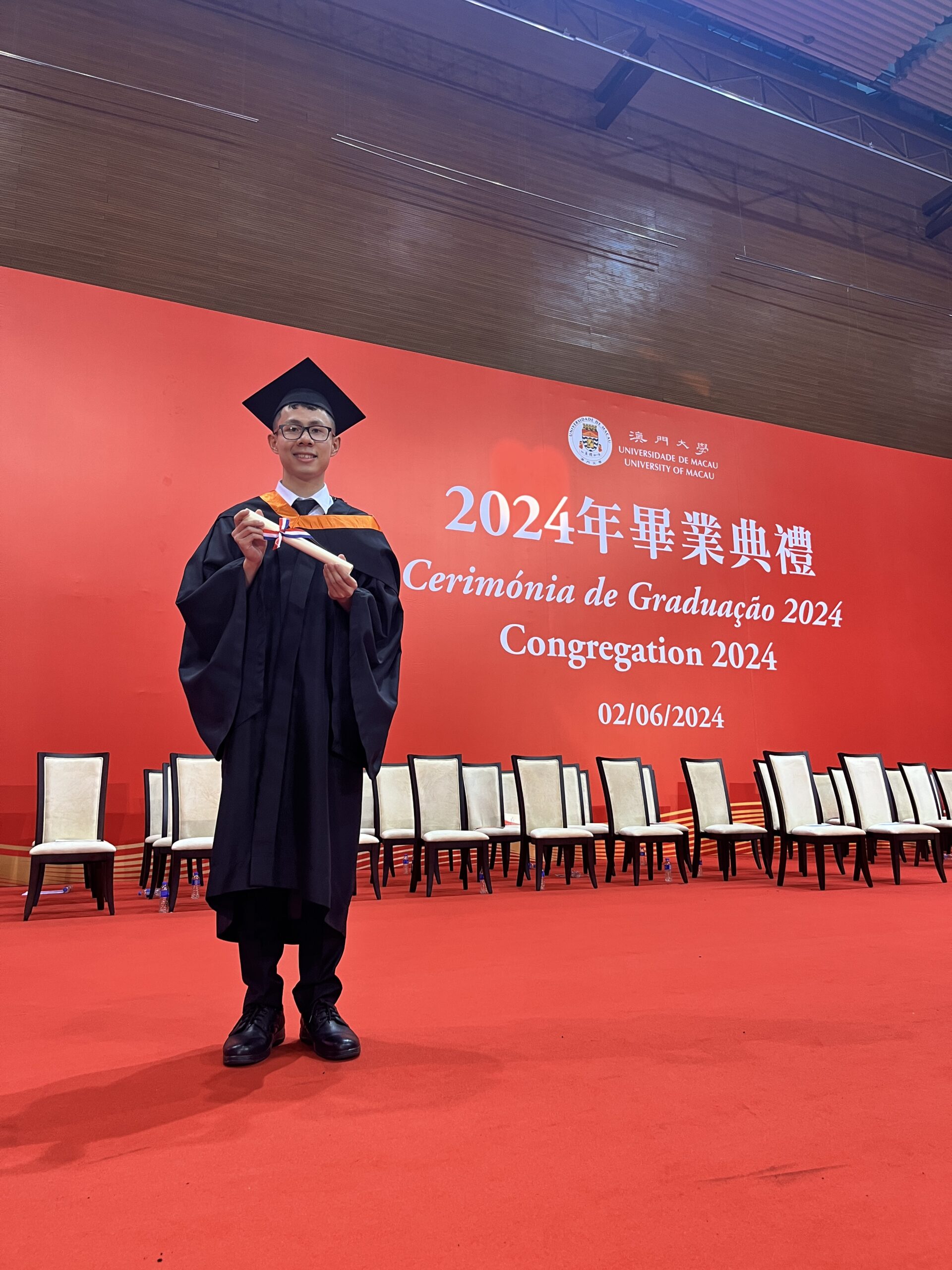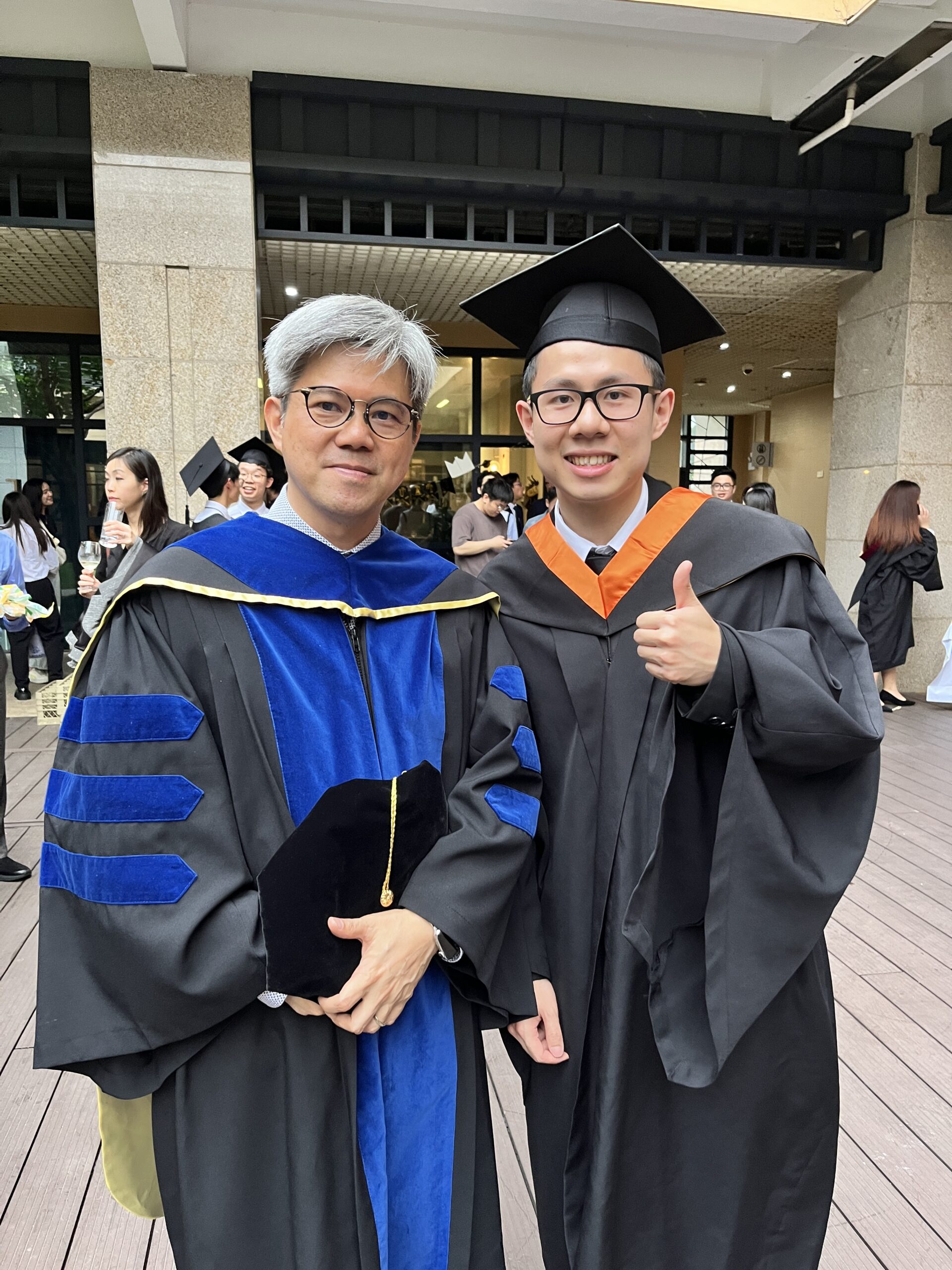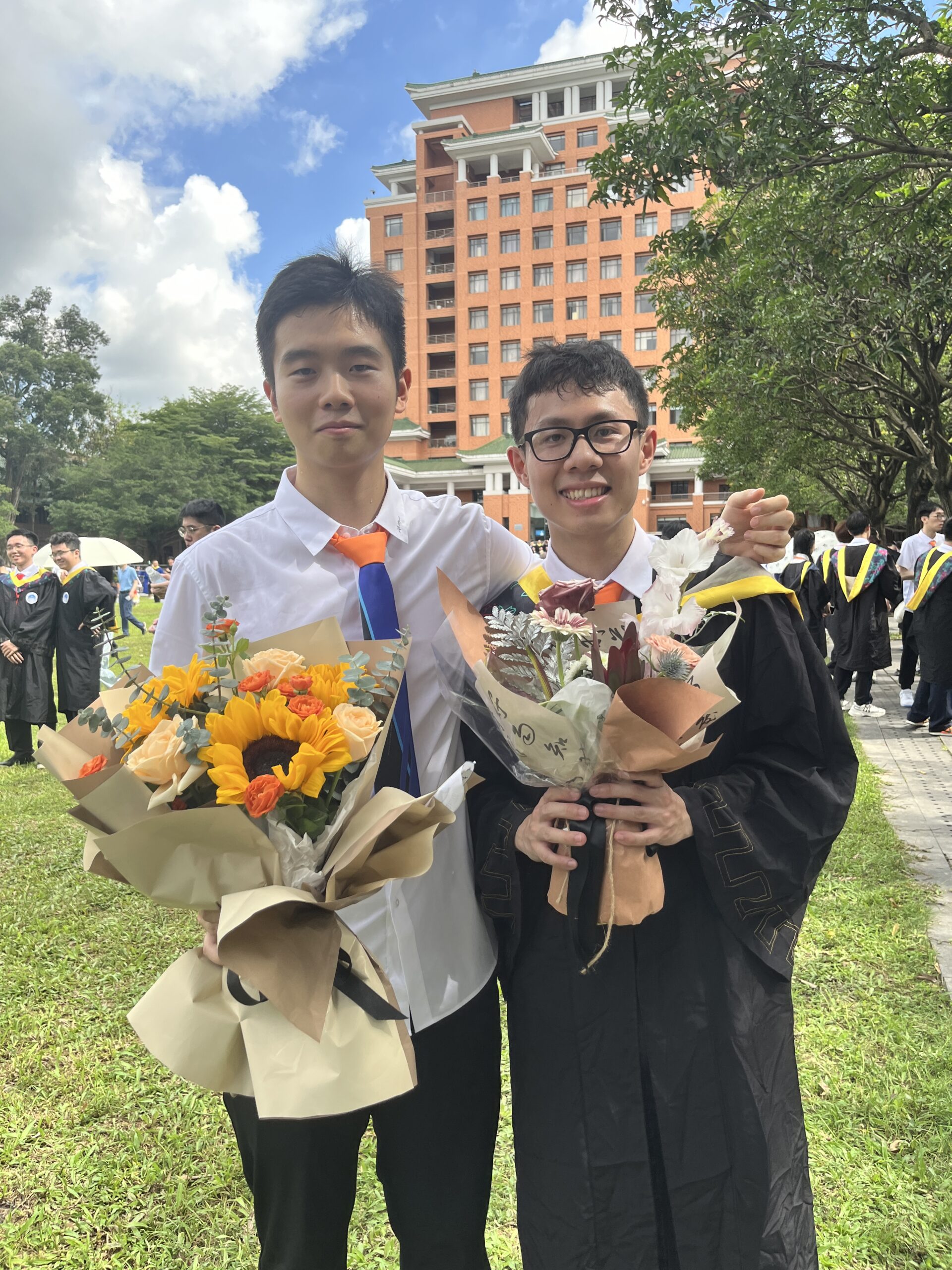Tam Chi Fong is a graduate of the Civil and Environmental Engineering Department of the University of Macau (UM) and the first graduate of the ” 2+2 Joint Programme” between UM and South China University of Technology (SCUT). As the first successful case of the joint programme, his experience marks a new phase in higher education cooperation within the Greater Bay Area, highlighting the potential for cross-institutional and cross-border collaboration among universities in the region. Tam’s success story will inspire more young students aspiring to develop in the Greater Bay Area.
Initiating the Academic Path in the Greater Bay Area
Tam ‘s academic journey began with an accidental discovery. During high school, he learned about this joint programme through a TV show. Students could earn bachelor’s degrees from two prestigious universities by studying civil engineering subjects at UM for two years and then completing another two-year civil engineering program at SCUT, all within four years. The curriculum leverages the strengths of both institutions and is specifically tailored to nurture talent for the Greater Bay Area. The joint programme not only broadens horizons but also allows students to deeply understand the cultural atmosphere and educational environment of both Macao and Mainland China, which was a significant attraction for him. “I felt that such an opportunity was rare, allowing me to obtain two degrees while experiencing firsthand the development trends of the Greater Bay Area,” said Tam.
Broadening Horizons, Moving Forward Boldly
When asked about the greatest advantage of the programme, Tam noted that it allowed him to experience mainland living styles and learning environments, broadening his horizons while enhancing his capabilities in all aspects. Especially after the pandemic, he had the chance to visit core enterprises and construction sites in the Greater Bay Area, engaging with industry experts, thus gaining a deeper understanding of the future direction of the industry. “These experiences made me even more certain about my future direction because I saw the immense potential for the development of the Greater Bay Area.” Tam said. As the first graduate of the programme, Tam faced many challenges, particularly regarding curriculum design and credit arrangements. “The biggest challenge was being the first participant, so there were some unforeseen difficulties in practical implementation.” He said. However, these challenges honed his problem-solving skills. “I learned to take the initiative in solving problems, communicating situations with professors from both universities, and ultimately successfully resolved many issues.” These experiences greatly benefited him and made him more independent and confident.
Cultural Integration, Language Enhancement
During his studies at SCUT, Tam not only improved his Mandarin proficiency but also deeply felt the differences in teaching methods in Mainland China. “Courses on the mainland focus more on practical operations, while UM provides more tutoring, such as study sessions led by Teaching Assistants.” He added that although there were subtle cultural differences between the two places, overall, these experiences were very beneficial. Currently, Tam is pursuing a master’s degree in Civil and Environmental Engineering at UM. For the future, Tam hopes to become an engineer who can serve as a bridge for cooperation between the two places. He plans to obtain an engineering license and accumulate work experience in Macao before developing further in the Greater Bay Area.
The Significance of Cross-Institutional and Cross-Border Collaboration
Tam believes that such cross-institutional and cross-border collaboration programmes are significant for students, providing them with a new platform for learning and growth while promoting closer exchanges and cooperation among universities within the Greater Bay Area, driving regional coordinated development. For juniors interested in participating in the joint programme, Tam summarized several pieces of advice, “First, possess a certain level of Chinese language ability, which is crucial for successfully completing your studies; second, be prepared mentally to face various challenges, maintaining a proactive attitude; finally, plan your time reasonably to ensure you can complete all courses on schedule.” Through Tam’s successful example, universities in the Greater Bay Area will continue to deepen their cooperation, fostering talents suitable for the region. With his spirit of courage and perseverance, Tam Chi Fong has written his own splendid chapter. This is not only a testament to personal growth but also a model of successful educational cooperation in the Greater Bay Area.
譚志豐是土木及環境工程系的畢業生,同時也是首位澳門大學與華南理工大學「本科生2+2聯合培養計劃」的首屆畢業生。作為聯培計劃的首個成功案例,他的經歷標誌著大灣區高等教育合作邁向新階段,彰顯了大灣區高校跨校跨境合作的潛力,他的成功故事也將啟發更多渴望在大灣區發展的青年學子。
偶然的契機,開啟大灣區求學之路
譚志豐的求學之路始於一次偶然的發現。高中時,他通過電視節目得悉這個聯培計劃,學生只需在澳大修讀為期兩年的土木工程學科,以及在華南理工大學修讀同樣為期兩年的土木專業課程,即可在四年內獲取兩所知名大學本科學位。課程內容發揮兩地高校的優勢,同時更針對性地為培養大灣區專才量身訂制。聯培計劃不僅能擴闊視野,也能令學生深入了解兩地的文化氛圍和教育環境,這對他來說無疑是一個龐大的吸引力。「我當時覺得這樣的機會實屬難得,既能拿到兩個學位,又能提前親身體驗大灣區的發展趨勢,簡直一石二鳥。」譚志豐說道。
拓展視野,勇往直前
談及這個計劃的最大優勢時,譚志豐表示,計劃讓他得以深入體驗內地的生活方式和學習環境,視野的拓寬同時全方位提升自身能力。尤其在疫情結束後,他得以親身走進大灣區的核心企業與施工現場,與業界專家進行交流,從而對行業未來走向有了更透徹的認識。「這些經歷讓我更加確信未來的方向,因為我看到了大灣區未來發展的巨大潛力。」作為該計劃的首名畢業生,譚志豐也遇到了不少挑戰,特別是在課程設計和學分安排方面。「最大的挑戰是畢竟我是第一名參加者,所以在實際操作中會有一些預想不到的困難。」然而,正是這些挑戰恰恰鍛煉了他解決問題的能力。「我學會了主動解決問題,將遇到的情況與兩校教授反映,也曾主動約見雙方的教授,最終成功解決了不少難題。」這些經歷讓他受益匪淺,同時也變得更獨立自信。
文化交融,語言提升
在華南理工大學學習期間,譚志豐不僅提升了普通話水平,還深刻感受到了內地教學方式的不同。「內地的課程更注重實踐操作,而澳大則提供了更多的輔導,如助教(Teaching Assistant) 主持的輔導班等。」他補充道,儘管兩地存在細微的文化差異,但整體而言,這些經歷讓他獲益良多。如今,譚志豐正在澳大攻讀土木及環境工程碩士學位。對於未來,譚志豐希望成為一個能夠促進兩地合作橋樑的工程師,他打算先取得工程師執照並在澳門積累一定工作經驗後,再赴大灣區發展。
跨校跨境合作的意義
譚志豐相信,這樣的跨校跨境合作計劃對於學生而言意義重大,不僅為他們提供全新的學習與成長平台,還有助於增進大灣區內各高校之間的緊密交流與合作,推動區內協同發展。對於有志參加聯培計劃的師弟師妹,譚志豐總結了幾點建議:「首先要具備一定的中文能力,這對於順利完成學業至關重要;其次,要做好解決各種挑戰的心理準備,保持積極主動的態度;最後,要合理規劃時間,確保能按時完成所有課程。」通過譚志豐成功先例,大灣區高校將繼續深化合作,針對性地培養適用區內的專才。譚志豐以自己勇於嘗試和努力不懈的精神,同樣開創了屬於自己的精彩篇章。這不僅是個人成長的見證,也是大灣區教育合作成功的典範。






